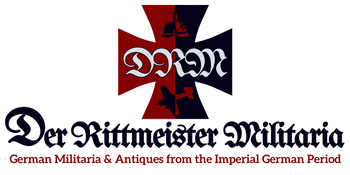Bavaria (Königreich Bayern)
CLICK HERE FOR ALL PRODUCTS RELATED TO BAVARIA
Basic Information
- Official Name: Kingdom of Bavaria (Königreich Bayern)
- Capital: Munich (München)
- Motto: "In Treue Fest" (In Loyalty Steadfast)
- Established: 1806 as a kingdom (earlier as a duchy in 555 AD)
- Dissolution: Transitioned to the Free State of Bavaria in 1918 following the abdication of King Ludwig III.
-
Key Symbols:
- Coat of Arms: A shield divided into the iconic blue-and-white lozenges and the black lion of the Palatinate.
- Flag: Blue and white lozenges or horizontal stripes.
Geographical Overview
-
Location:
Located in southeastern Germany, bordered by Austria, the Czech Republic, and several German states. Major cities included Munich, Nuremberg, and Regensburg. -
Size:
The second-largest state in Imperial Germany, with diverse geography encompassing the Alps, forests, and river valleys. -
Land Features:
- Alps: Towering mountains in southern Bavaria.
- Danube River: A key trade and transportation route.
- Franconian and Bavarian Forests: Densely wooded areas rich in natural resources.
Historical Timeline
-
Early Bavaria:
- 6th Century: Established as a duchy by Germanic tribes under the Agilolfing dynasty.
- 8th Century: Incorporated into the Carolingian Empire under Charlemagne.
-
Electorate of Bavaria (1623–1806):
- Became an electorate of the Holy Roman Empire during the Thirty Years’ War.
- Bavaria aligned with France and Austria during various European conflicts.
-
Kingdom of Bavaria (1806–1918):
- Elevated to a kingdom by Napoleon during the Confederation of the Rhine.
- Joined the German Empire in 1871, maintaining significant autonomy.
- Played a key role in Germany’s cultural and political development.
-
Decline (1918):
- King Ludwig III abdicated during the German Revolution, transitioning Bavaria into a democratic Free State.
Notable Rulers and Leaders
- Maximilian I Joseph (1806–1825): The first King of Bavaria, focused on modernization and legal reforms.
- Ludwig I (1825–1848): A patron of the arts and architecture, builder of the Walhalla memorial.
- Ludwig II (1864–1886): Known as the "Fairy Tale King," he commissioned iconic castles like Neuschwanstein.
- Ludwig III (1913–1918): The last King of Bavaria, whose abdication marked the monarchy's end.
Military and Political Strength
-
Military Contributions:
- Bavaria retained its own army and administration within the German Empire.
- Played a key role in the Franco-Prussian War and other German unification conflicts.
-
Political Role:
- Bavaria maintained unique rights, including control over its postal system and military during peacetime.
- Its predominantly Catholic population distinguished it culturally and politically within Protestant-dominated Germany.
Cultural Contributions
-
Architecture:
- Neuschwanstein Castle: An iconic symbol of Romanticism and Ludwig II’s vision.
- Nymphenburg Palace: A Baroque masterpiece near Munich.
- Walhalla Memorial: A hall of fame honoring German figures, built near Regensburg.
-
Arts and Literature:
- Bavaria was home to luminaries like composer Richard Wagner, supported by Ludwig II.
- Hosted artists and writers, fostering Germany’s Romantic movement.
-
Festivals and Traditions:
- Oktoberfest: Originated in 1810 and remains a global cultural phenomenon.
- Rich traditions in folk music, clothing (lederhosen and dirndls), and crafts.
-
Education and Science:
- Bavaria’s universities, including the University of Munich, were leaders in philosophy, theology, and science.
- Prominent figures like Max Planck contributed to groundbreaking advancements in physics.
-
Cuisine:
- Known for Weißwurst (white sausage), pretzels, and Bavarian beer, brewed under the 1516 Purity Law.
- Sweet dishes like Dampfnudel and Kaiserschmarrn are iconic.
Fall of Bavaria
-
World War I (1914–1918):
- Heavy losses in the war, coupled with economic strain, led to unrest.
-
German Revolution (1918):
- The abdication of Ludwig III ended the monarchy, and Bavaria became a Free State.
-
Post-WWII (1945):
- Reintegrated as Bavaria in modern Germany, becoming a cultural and economic powerhouse.
Connections to Products
-
Military Memorabilia:
- Bavarian army medals, uniforms, and helmets, including the distinct Pickelhaube with Bavarian insignia.
- Commemorative pieces from Bavaria’s participation in German unification wars.
-
Cultural Artifacts:
- Items featuring iconic castles like Neuschwanstein or the Walhalla Memorial.
- Traditional folk crafts, including hand-carved figurines and cuckoo clocks.
-
Architectural Replicas:
- Miniature models of Bavaria’s famous palaces and castles.
-
Festive and Culinary Memorabilia:
- Oktoberfest souvenirs, beer steins, and vintage brewery labels.
- Tools and cookbooks for preparing traditional Bavarian dishes.
-
Historical Documents:
- Maps, royal decrees, and documents showcasing Bavaria’s governance and cultural influence.







